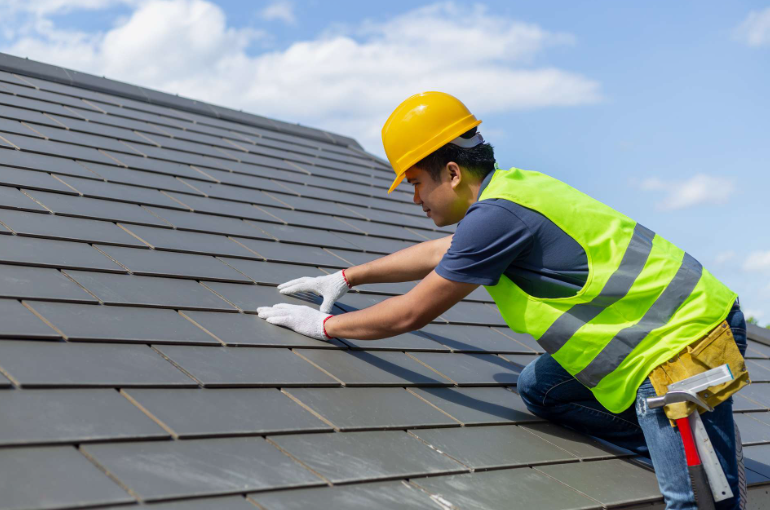As the year 2025 approaches, the commercial roofing industry is poised to experience exciting innovations and advancements that will shape the way businesses approach their roofing systems. Commercial roofing plays a significant role in protecting buildings, ensuring structural integrity, and enhancing energy efficiency. In this blog, we will explore the top commercial roofing trends for 2025, with a special focus on “roofing in Louisville, KY,” and how these trends are setting the stage for a safer, more sustainable future.
1. Energy-Efficient Roofing Solutions
With growing awareness about environmental sustainability and energy savings, energy-efficient roofing systems continue to be one of the top trends for 2025. Commercial building owners are seeking roofing solutions that not only protect the building but also contribute to a lower energy footprint. Cool roofing technologies that reflect heat and UV rays from the sun have gained popularity.
One of the key elements of this trend is the increased adoption of reflective roof coatings and white or light-coloured roof membranes. These coatings reduce the amount of heat absorbed by the roof, which helps maintain a stable indoor temperature. The adoption of reflective roofs in roofing in Louisville, KY, is especially important due to the region’s varied climate. The benefits of energy-efficient roofing are clear – improved indoor comfort, reduced cooling costs, and a decreased environmental impact.
As we head into 2025, green roofs are another energy-efficient innovation on the rise. These roofs, covered in plants and vegetation, help to regulate indoor temperatures naturally by providing insulation and shade. These green roofs have gained significant traction in urban areas where space is limited, and sustainable building practices are a top priority.
2. Smart Roofing Technologies
The advancement of technology has permeated the roofing industry, giving rise to “smart roofs” that use sensors and data analytics to monitor and improve roof performance. In 2025, smart roofing technologies will take commercial roofing to the next level.
IoT (Internet of Things) devices placed on roofs will be used to track weather patterns, detect leaks, and identify early signs of damage. This data is invaluable for business owners and roofing contractors alike, allowing for preventative maintenance and swift repairs.
For example, by utilizing weather sensors, a building owner can receive alerts when a storm with high winds or heavy rain is predicted, enabling them to prepare and prevent any potential damage to the roof. This technology improves not only the longevity of the roof but also the safety of the building itself.
Smart roofs can also use thermal imaging sensors that monitor changes in temperature and humidity, ensuring energy efficiency is maintained by preventing heat loss during colder months and reducing heat absorption in hotter months.
3. Sustainable and Eco-Friendly Roofing Materials
The eco-conscious movement is expected to continue making a significant impact on the commercial roofing industry in 2025. Roofing materials that are sustainable, recyclable, and locally sourced are becoming the norm for businesses looking to minimize their environmental footprint.
Recycled and recyclable materials, such as TPO (Thermoplastic Olefin) and PVC (Polyvinyl Chloride), are becoming popular choices for commercial roofs. These materials not only provide durability and energy efficiency but are also manufactured with sustainability in mind. As eco-friendly standards continue to tighten, expect more manufacturers to innovate in sustainable materials, offering businesses even more choices for greener roofs.
Additionally, roofing systems that promote water retention, such as green roofing systems, play an essential role in minimizing urban heat islands and reducing stormwater runoff. Cities like Louisville, KY, that experience periods of intense rainfall can benefit significantly from these types of installations. Green roofs also support biodiversity, contributing positively to the urban environment.
4. Single-Ply Roofing Membranes
Single-ply roofing membranes have already been a staple in the commercial roofing industry, but their popularity will continue to rise in 2025. This roofing solution is designed to be durable, lightweight, and highly effective in providing long-term protection.
The versatility of TPO, EPDM (Ethylene Propylene Diene Monomer), and PVC membranes is another reason why they are top-of-mind for businesses. They are easy to install, highly resistant to UV rays, and perform well in varying weather conditions. This makes them a perfect fit for commercial roofing in diverse climates such as roofing in Louisville, KY, where winters can be cold, and summers can be extremely hot.
What’s more, these single-ply membranes are incredibly cost-effective and low maintenance, making them ideal for companies looking to minimize overhead costs without sacrificing quality. With significant advancements in the materials used for these roofing systems, single-ply membranes are becoming more energy-efficient, durable, and long-lasting.
5. Improved Roof Insulation
As commercial building owners focus more on energy-efficient solutions, roof insulation plays a crucial role in providing temperature stability. Roof insulation reduces heat loss in winter and minimizes heat gain in summer, thereby helping businesses reduce their energy costs.
In 2025, insulation solutions are expected to become even more sophisticated, thanks to polyurethane spray foam (SPF), which provides superior insulation and enhances the performance of commercial roofing systems. Spray foam insulation has proven to be highly effective in forming a seamless, airtight layer across the entire roof, which eliminates air leaks and improves energy efficiency.
The continued development of advanced insulation materials that have higher R-values (a measure of insulation’s effectiveness) will also help commercial building owners maintain year-round comfort. Enhanced insulation is particularly beneficial for industries where temperature control is essential, such as warehouses, retail spaces, and data centers.
6. Roof Coatings and Maintenance
In 2025, commercial roofing systems will increasingly prioritize regular coatings and maintenance. Reflective coatings and topcoat layers help commercial roofing systems last longer, resist damage, and offer more insulation to a building. These coatings extend the roof’s lifespan and reduce the cost of repairs by protecting the surface from wear and tear caused by harsh weather conditions.
Roof coating systems are easy to apply and add an extra layer of protection to a roof. They are especially popular for older roofs that have already undergone significant wear and tear. By sealing cracks, preventing leaks, and reducing roof degradation, roof coatings save business owners from costly repairs and replacements.
Regular roof inspections, supported by advanced drone technology, are becoming common in the roofing industry. Drones can effectively survey large commercial buildings, assess damage, and gather data for analysis without the need for scaffolding or ladders. This technology ensures that commercial roofs receive timely inspections, keeping repairs ahead of any major issues that could compromise building integrity.
7. Roofing for Extreme Weather Resistance
As global weather patterns continue to change, commercial buildings are increasingly exposed to extreme weather events, including storms, hail, heavy snow, and high winds. In response to this, 2025 roofing trends are focusing on resilient roofing materials that can withstand such extreme conditions.
For instance, impact-resistant roofing materials like modified bitumen and metal roofing have become sought-after options for businesses in areas prone to frequent storms. The increased adoption of wind-resistant and hail-resistant roofs provides a much-needed level of security for business owners and can significantly reduce the frequency and cost of repairs in storm-prone regions like Louisville, KY.
FAQs
1. Why should I invest in energy-efficient roofing for my commercial property?
Investing in energy-efficient roofing not only helps reduce your overall energy consumption but also enhances the comfort of your building’s interior. Energy-efficient roofs lower heating and cooling costs, reduce the need for artificial lighting, and contribute to sustainability efforts. Over time, this investment leads to significant cost savings and helps you meet environmental standards while improving the overall value of your property.
2. How long does a commercial roof typically last, and what factors affect its lifespan?
The lifespan of a commercial roof varies depending on the type of material used, installation quality, and maintenance frequency. On average, commercial roofs can last between 20 to 30 years. Factors such as local climate conditions, exposure to harsh weather, and routine maintenance practices play significant roles in determining a roof’s longevity.
3. Can my roof be upgraded to improve energy efficiency without replacing the entire system?
Yes, there are several ways to improve the energy efficiency of your existing commercial roof without full replacement. Roof coatings and insulation upgrades can increase the thermal performance of your roof and reduce energy consumption. Additionally, green roofs and solar panels are options that can be added to your current system to boost sustainability and energy savings.
Conclusion
The commercial roofing industry in 2025 is full of exciting possibilities, as businesses are prioritizing sustainability, resilience, and technology in their roofing decisions. With advancements such as energy-efficient solutions, smart technologies, and improved materials, commercial roofing will continue to evolve. Business owners in Louisville, KY, and across the nation will benefit from these trends by investing in smarter, more sustainable roofs that offer enhanced protection, energy savings, and a lower environmental impact. By staying ahead of these trends, your business can ensure a safe, cost-effective, and eco-friendly future.



